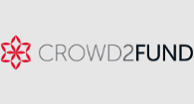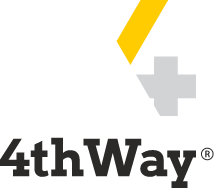See why 4thWay now accepts ethical ads.
Crowd2Fund Review
Good to see small business lending where lenders can choose their own loans, but its business has been struggling and it provides insufficient information, data and access to assess the risks

Crowd2Fund's Business & Property Lending is unrated, due to lack of information.
There's not enough info to calculate the annualised interest rate earned by lenders after bad debts.
Visit Crowd2Fund or keep reading the Crowd2Fund Review.
To get the best lending results, compare all P2P lending and IFISA providers that have gone through 4thWay’s rigorous assessments.
What is Crowd2Fund?
Crowd2Fund does small business peer-to-peer lending.
When did Crowd2Fund start?
It started peer-to-peer lending in 2015 and by 2025 it has now lent £50 million.
What interesting or unique points does Crowd2Fund have?
Crowd2Fund is a rare, small business lending P2P company in that lenders still can, and usually do, choose their own loans. In so doing, lenders intend to achieve better than average results compared to others using Crowd2Fund.
You can lend in loans of 1-5 years, receiving regular loan and interest repayments. Or you can lend in loans where you receive regular interest and your money back at the end.
Crowd2Fund also offers you “Revenue Loans”, which means the business borrower pays back more or less each month, based on how much money it’s making.
Crowd2Fund has previously offered other products to borrowers, funded through its online platform, but they’ve been discontinued. We have no knowledge of their performance.
Crowd2Fund review: how good are its loans?
Crowd2Fund told us it actively contacts healthy businesses and encourages them to borrow to fund new projects, i.e. it doesn’t do loans to help businesses that need help to cover costs for a while.
However, this is not exclusively the case. A review of some of its individual loans appears to show that some borrowers do borrow to cover costs (“working capital”) and to consolidate existing debts.
Crowd2Fund adjusted its lending processes at least once over the past one to two years. It takes time for the effectiveness of new processes to show, as bad debts tend to arise later in these kinds of loans.
(Indeed, that was also true when Crowd2Fund started in 2015, when there were negligible bad debts for some time until the loans became more mature.)
Crowd2Fund has claimed a 27% recovery rate on bad debt. While such a rate would be more than acceptable for these kinds of loans, this particular figure is out-of-date, its usage by Crowd2Fund is ambiguous, we haven’t been able to verify it, and I think it likely has worsened recently.
How much experience do Crowd2Fund’s key people have?
Crowd2Fund’s people have changed a lot over the years and the rotation continues.
I have not interviewed the latest team. I’ve therefore not followed that up with background checks as there’s little point without direct contact, but I’ve glanced at their public profiles for you.
Public information appears to show that it currently has no-one in the role of head of credit. When this role has been filled in the past it appeared to be by people with little experience. It has, however, received consultancy from at least one person with more experience.
This isn’t necessarily a problem, providing the policies for approving loans and setting interest rates that are in place are sufficient for Crowd2Fund’s credit analyst and underwriting team (which approves or rejects loans) to work with.
The relatively new head of bad-debt recoveries has a varied career, but none of it appears to have focused specifically and mainly on this area. This appears to be a step backwards in staffing when evaluating the position entirely based on experience, although if proper processes remained in place then perhaps it is fine.
There have often been discrepancies between who Crowd2Fund lists as staff on its website and other source material, with information also getting very out-of-date at times. 4thWay has never received any answers to our queries about these issues.
Crowd2Fund review: lending processes
The processes that I will describe to you now are sadly out-of-date, with no prospect of being updated any time soon.
The lending processes and lending criteria described to us (way back when) were highly appropriate for this kind of lending.
On top of the basic credit and fraud checks that we’d expect to see, the focus was on cash flow to and from the business borrower, with borrower cash generally needing to be 1.25 times the size of the monthly loan payments, which is suitable for these kinds of loans.
The business borrowers needed at least two years’ trading history, which is also a good minimum to have.
Standards for Revenue Loans are not as strict, and I think those loans are probably for expert investors to lend in only.
The fixed process for stepping up actions on late borrowers are sensible and timely, although we don’t have the evidence that these plans are being implemented in practice.
It appears that borrowers can today still borrow even if they raise far less money than they said they needed. This is most unusual. Whether fairly or not, it smacks of desperate borrowing. You usually expect that a borrower borrows the full amount it needs for whatever its goals are.
The last we were told, Crowd2Fund doesn’t do the kind of bank-like risk modelling that we hope to see for these kinds of loans, although admittedly such modelling is not easy until it’s approved thousands more loans.
How good are Crowd2Fund’s interest rates, bad debts and margin of safety?
As of January 2025, we have no quality information on the annualised interest rates earned by lenders. It appears from limited information that Crowd2Fund has very slowly recognised various bad debts, leading to it acknowledging reduced returns recently.
It seems most likely that average returns have been somewhere in the region of 4% to 6.5%, so roughly half the interest charged.
Piecing together all the limited and unverified information available, it seems highly probable that most Crowd2Fund lenders have made money, if they have made good effort to spread across many loans.
Some simple statistics indicate that 14% of lenders might have lost money or be on track to do so. However, if you exclude all the lenders who we can be certain didn’t take the basic, essential step of spreading across enough loans, this falls to around 5%.
While bad-debt levels seem reasonable, due to lack of detailed data and documentation we don’t know if Crowd2Fund has been kicking problem debts down the road. This is when a P2P lending site either extends bad loans, doesn’t recognise them as bad debts, or re-arranges existing loans to make it easier for distressed borrowers to appear sound – for a while.
We also don’t know if Crowd2Fund has been hiding bad debts by making payments to lenders itself. Some small print that was once shown on one page of its site hints that extra payments might have been made to lenders to offset write-offs. This obscures the quality of the lending further and we don’t know how sustainable any additional compensation to lenders might be.
Two years ago, I was right to call that bad debts were likely to rise on existing loans as they matured and as delayed pandemic bad debts filter through. However, this doesn’t apply to newer loans, which I am unable to assess.
With Revenue Loans, at this stage, I don’t have the data and information to weigh up the risk-reward balance, even in the superficial way that I have been doing so for the other loans.
Has Crowd2Fund provided enough information to assess the risks?
No. Crowd2Fund doesn’t supply even simple data or evidence to 4thWay and it hasn’t answered our questions on performance.
We rarely now approach Crowd2Fund for information as we don’t typically get useful answers – although on balance I think it’s most likely down to lack of resources at their end rather than trying to hide facts.
As of January 2025, its published statistics continue to be deeply insufficient for comprehension and for individual lenders to make a reasonable assessment from home.
It needs to provide a lot more information to demonstrate and prove its past performance, but at present it doesn’t appear to have the resources to engage with 4thWay.
Crowd2Fund lenders might also rightly be disappointed that they are not handed more details on a plate when they are selecting individual loans for themselves. For example, Crowd2Fund could explain why a borrower can cope, if its figures show that the borrower has a lot of outstanding debt.
It’s a potentially useful touch, though, that lenders can ask prospective borrowers questions through the Crowd2Fund platform, and all lenders get to see the answers.
Is Crowd2Fund profitable?
Crowd2Fund has been so innovative in finding new types of loans, in how it provides guidance on the loan price you should go for when selling loans second hand, in automations and more. Yet its business has been struggling badly.
It has made annual losses of £800,000 to £1.2 million for six years. At the same time, it’s average revenue has been around £400,000. It has earned even less than that in the past three to four years. It is inconceivable that Crowd2Fund will make a profit in the coming year and is relying on loans from its shareholders.
A few years ago, Crowd2Fund replaced its people, including its board. It also cut costs, changed its strategy, then increased marketing spend.
In its most recent report, it said it had again restructured its board, appointing new directors, and announced more cost-cutting and other measures. And then, at the begining of 2025, it appointed another new CEO.
Now, all those plans to survive and turn things around have been put in place, but it will require an awful lot to turn out right from its new setup. Two years in a row, its independent auditors have noted “material concerns” that Crowd2Fund will survive.
Crowd2Fund has sold over £4 million of its shares to its investors over many prior years and borrowed seven-figure sums from them. I’m sure it will need a lot more of this before it becomes profitable.
What can you tell me about Crowd2Fund’s cybersecurity?
Security provider Sucuri has done a soft probe of Crowd2Fund’s website for 4thWay. Its security compares very well to other P2P lending companies.
Crowd2Fund gets tested by a security expert every year in so-called penetration tests. The website looks free of malware and it’s marked as clean by Sucuri, Google Sage Browsing, McAfee, PhishTank, Opera and Yandex.
It’s a secure website with a valid security certificate. That helps to protect you when you supply your personal data. It automatically directs you to a secure version of its site.
A separate service offering a modern payment system manages money in and out, and looks for fraud.
Is Crowd2Fund a good investment?
I have no ringing endorsement, not least due to Crowd2Fund’s own seemingly desperate financial situation.
With the information, data and access being a lot less than I want and need, Crowd2Fund is a higher-risk opportunity for people who want to take more chances using a small proportion of their money.
What is Crowd2Fund’s minimum lending amount and how many loans can I lend in?
You can lend as little as 10p per loan.
If you want Crowd2Fund to automatically lend your money across different borrowers, the minimum is £250. Drip your money in, lending regularly over a large number of months, to ensure your money is lent across lots of borrowers.
Crowd2Fund will then ensure that you only lend once to the same borrower, at any one time.
You can now automatically lend new money on a monthly basis. You can also increase the rates you want to lend at (which at least loosely correlates with greater risk) or decrease them.
For these kinds of loans, 4thWay estimates you should be trying to lend across 180 loans if possible to further minimise the risk of random bad luck eating away at your lending profits.
You’re going to need to take a long time to drip your money in to try to be lending in as many as possible.
Does Crowd2Fund have an IFISA?
Crowd2Fund’s lending account is primarily sold as an IFISA.
Crowd2Fund insisted to 4thWay that it offers an ordinary P2P lending account in addition to the IFISA, although I can’t see where it says that on its website and indeed the site reads to me like IFISAs are the only option. Crowd2Fund didn’t respond to our request for further information on how to open an ordinary account.
However, we know that if you put in more cash than your IFISA limit, the excess lending will be outside of the IFISA.
Can I sell Crowd2Fund loans to exit early?
You can sell Crowd2Fund loans before borrowers repay them naturally to other lenders for a 1% fee.
Crowd2Fund sets a price range that you can offer good-performing loan parts for sale, based on loan performance, recent business performance and recent Equifax scores. Loans must have A, B or C Equifax grade.
Crowd2Fund in a wind down
Crowd2Fund’s wind-down plan suggests that if it were to go bust then its backup provider, EQ, has the same regulatory permissions as it does. A check with the Financial Conduct Authority finds that the company that uses the trading name “EQ” doesn’t have the main permission for P2P lending, which is operating an electronic system in relation to lending.
Crowd2Fund’s wind-down plan also warns that loans in wind-down may not be managed any more if Crowd2Fund fails and that, if they are managed, regulatory protections might be reduce or no longer available. I don’t recall right now seeing such warnings before in any wind-down plan.
What more do I need to know?
There are connections between one of the apparently ultimate controlling owners of Crowd2Fund and former cabinet ministers Matt Hancock and Nadhim Zahawi, as well as offshore trusts, tax rows, undeclared connections and so on. I’m sure it’s all very intriguing politically and that of course can mean more risks for lenders.
But, considering the lack of information, access and data Crowd2Fund already provides in many other matters, including on its actual lending performance, combined with its financial difficulties, I think it’s not a good use of time to investigate this in great detail when I can be researching something else for you entirely, fascinating as it is.
That’s because it’s already too difficult to correctly and deeply assess too many other risks at Crowd2Fund already. It’s really just one more item for the pile. If you’re interested in your own research, you could begin with a brief summary of what I consider to be just a small part of the story from here. May I recommend to anyone who feels motivated to investigate further that you read the wording used by the people involved very carefully.
Visit Crowd2Fund. If you’ve found the Crowd2Fund Review educational, please check out our other reviews.
Independent opinion: 4thWay will help you to identify your options and narrow down your choices. We suggest what you could do, but we won't tell you what to do or where to lend; the decision is yours. We are responsible for the accuracy and quality of the information we provide, but not for any decision you make based on it. The material is for general information and education purposes only.
We are not financial, legal or tax advisors, which means that we don't offer advice or recommendations based on your circumstances and goals.
The opinions expressed are those of the author(s) and not held by 4thWay. 4thWay is not regulated by ESMA or the FCA. All the specialists and researchers who conduct research and write articles for 4thWay are subject to 4thWay's Editorial Code of Practice. For more, please see 4thWay's terms and conditions.
The 4thWay® PLUS Ratings are calculations developed by professional risk modellers (someone who models risks for the banks), experienced investors and a debt specialist from one of the major consultancy firms. They measure the interest you earn against the risk of suffering losses from borrowers being unable to repay their loans in scenarios up to a serious recession and a major property crash. The ratings assume you spread your money across hundreds or thousands of loans, and continue lending until all your loans are repaid. They assume you lend across 6-12 rated P2P lending accounts or IFISAs, and measure your overall performance across all of them, not against individual performances.
The 4thWay PLUS Ratings are calculated using objective criteria that can be measured and improved on over time, although no rating system is perfect. Read more about the 4thWay® PLUS Ratings.
Our service is free to you. We don't receive commission or fees from the above-mentioned companies. We receive compensation from some other P2P lending companies when you click through from our website and open accounts with them, or to cover the costs of conducting our calculated stress tests and ratings assessments. This doesn't affect our editorial independence. Read How we earn money fairly with your help.




